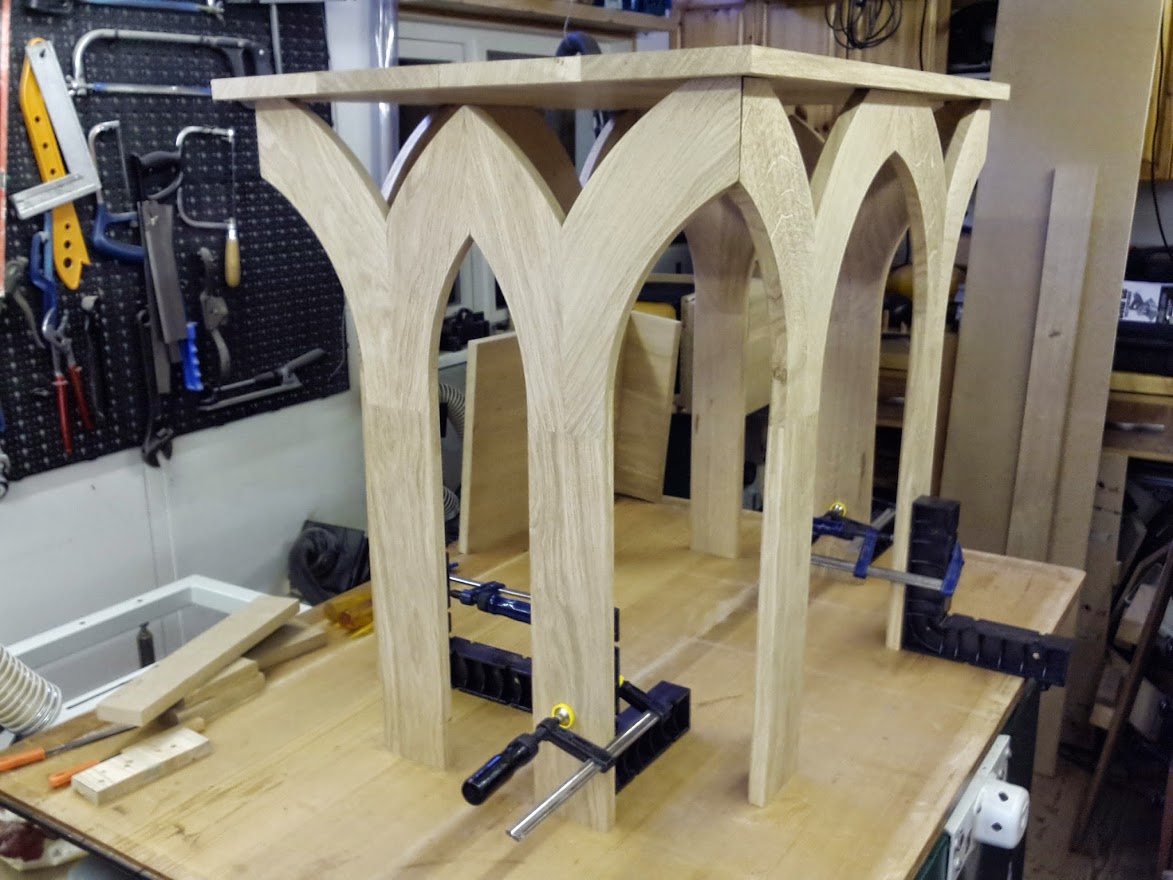Shultzy
Established Member
I posted this in the design section but only had 1 reply so I've reposted it here to see if it has a better response.
About 10 years ago I made a remembrance cabinet for a friend, to be displayed in a church. They recently asked me if I could make a table for it to make it free-standing. 10 designs later they have plumped for this one.

I will make all the parts out of 18mm thick oak. The top and plinth are the easy bits. The "legs" are slightly more difficult as there are a few ways to construct them.

Do I :
plank the top parts, "Y", with the grain running top to bottom then cut out,
cut the "branches" out with the grain running along the curve and connect with biscuits or a half lap,
cut all the legs out of 9mm oak, with the grain running along the curve, and laminate in two halves.
I am going to screw the parts to the top and base, these won't be seen, as I thought M&T would be overkill.
Your comments would be much appreciated.
About 10 years ago I made a remembrance cabinet for a friend, to be displayed in a church. They recently asked me if I could make a table for it to make it free-standing. 10 designs later they have plumped for this one.

I will make all the parts out of 18mm thick oak. The top and plinth are the easy bits. The "legs" are slightly more difficult as there are a few ways to construct them.

Do I :
plank the top parts, "Y", with the grain running top to bottom then cut out,
cut the "branches" out with the grain running along the curve and connect with biscuits or a half lap,
cut all the legs out of 9mm oak, with the grain running along the curve, and laminate in two halves.
I am going to screw the parts to the top and base, these won't be seen, as I thought M&T would be overkill.
Your comments would be much appreciated.







































